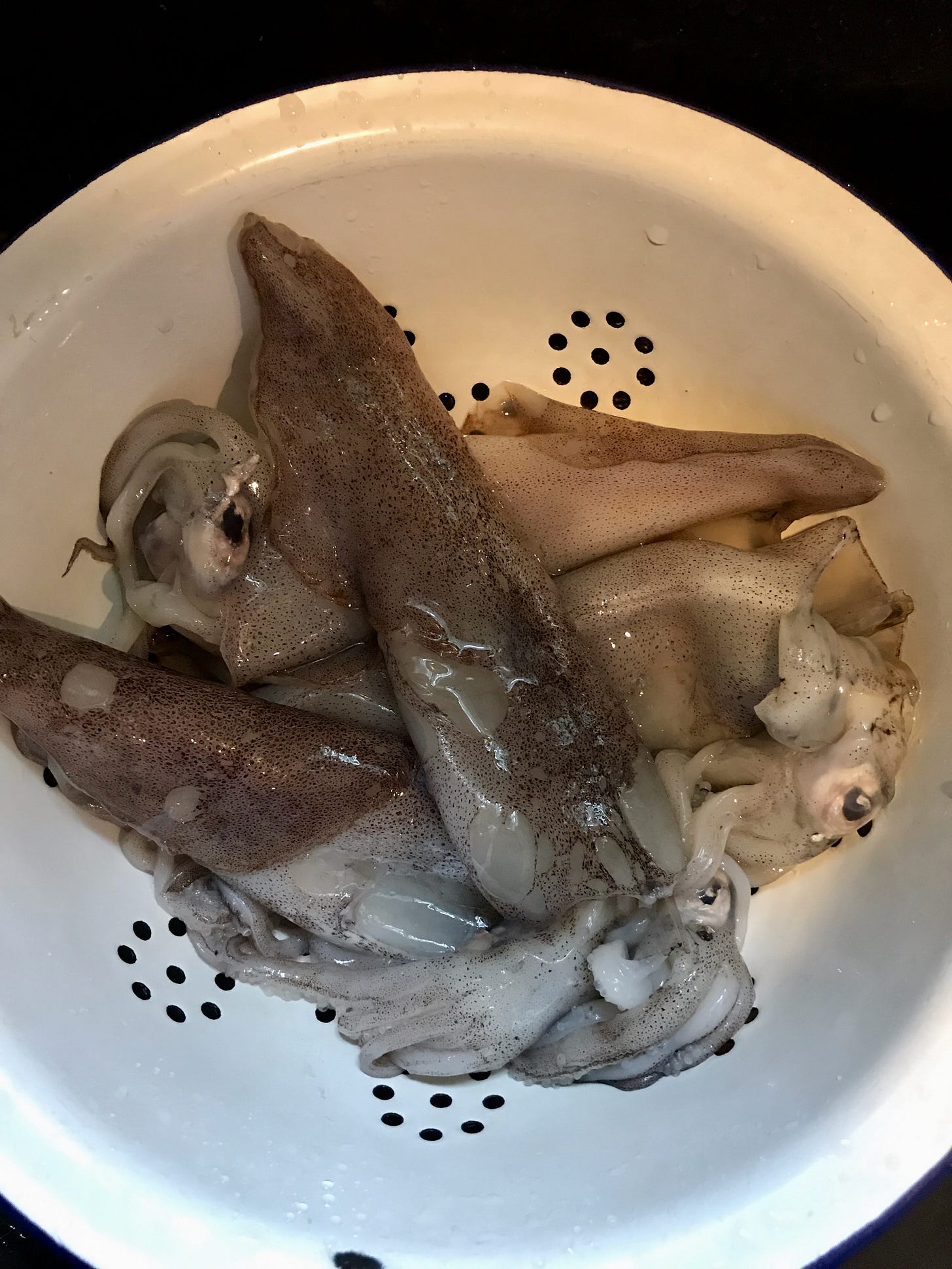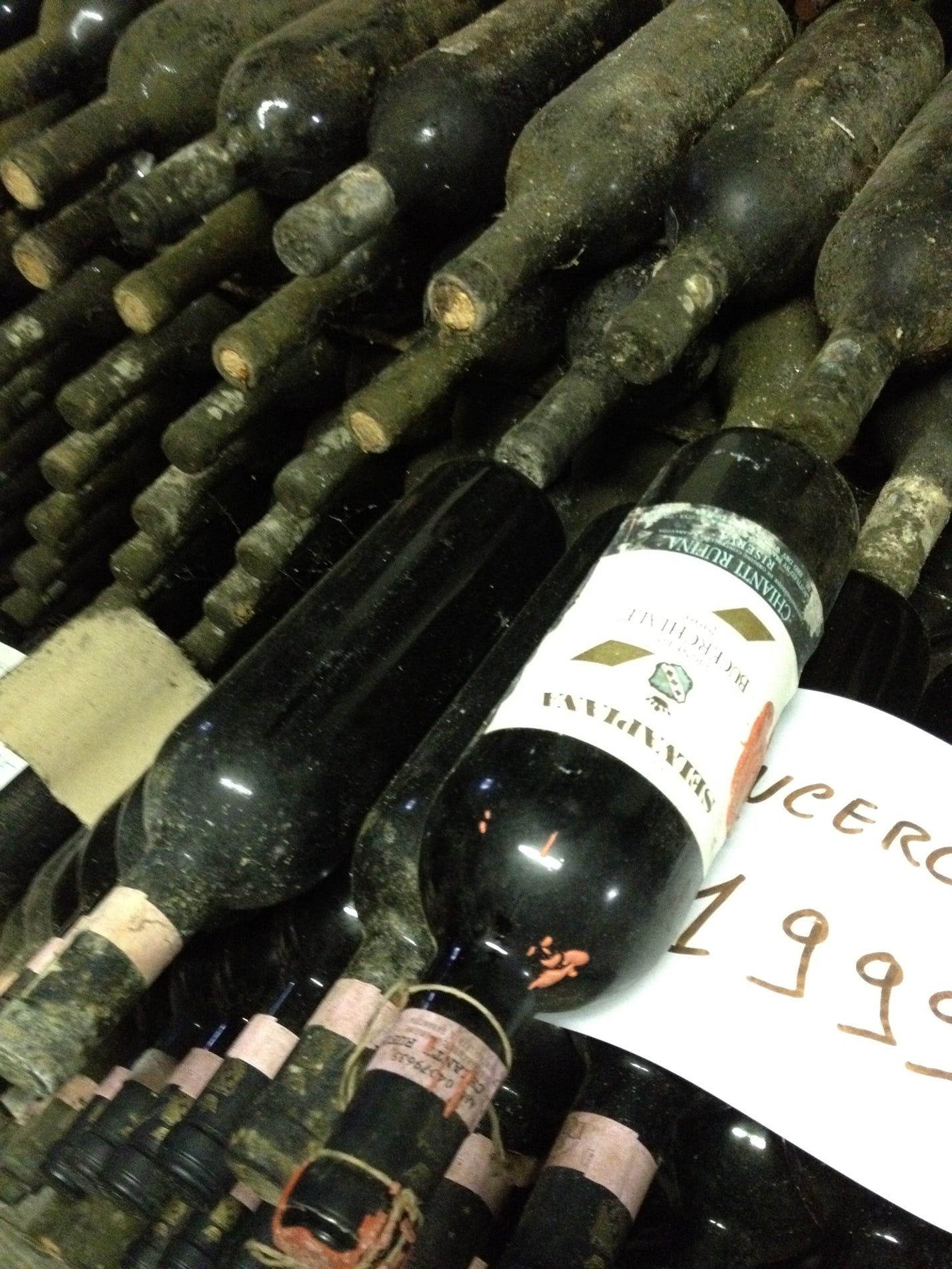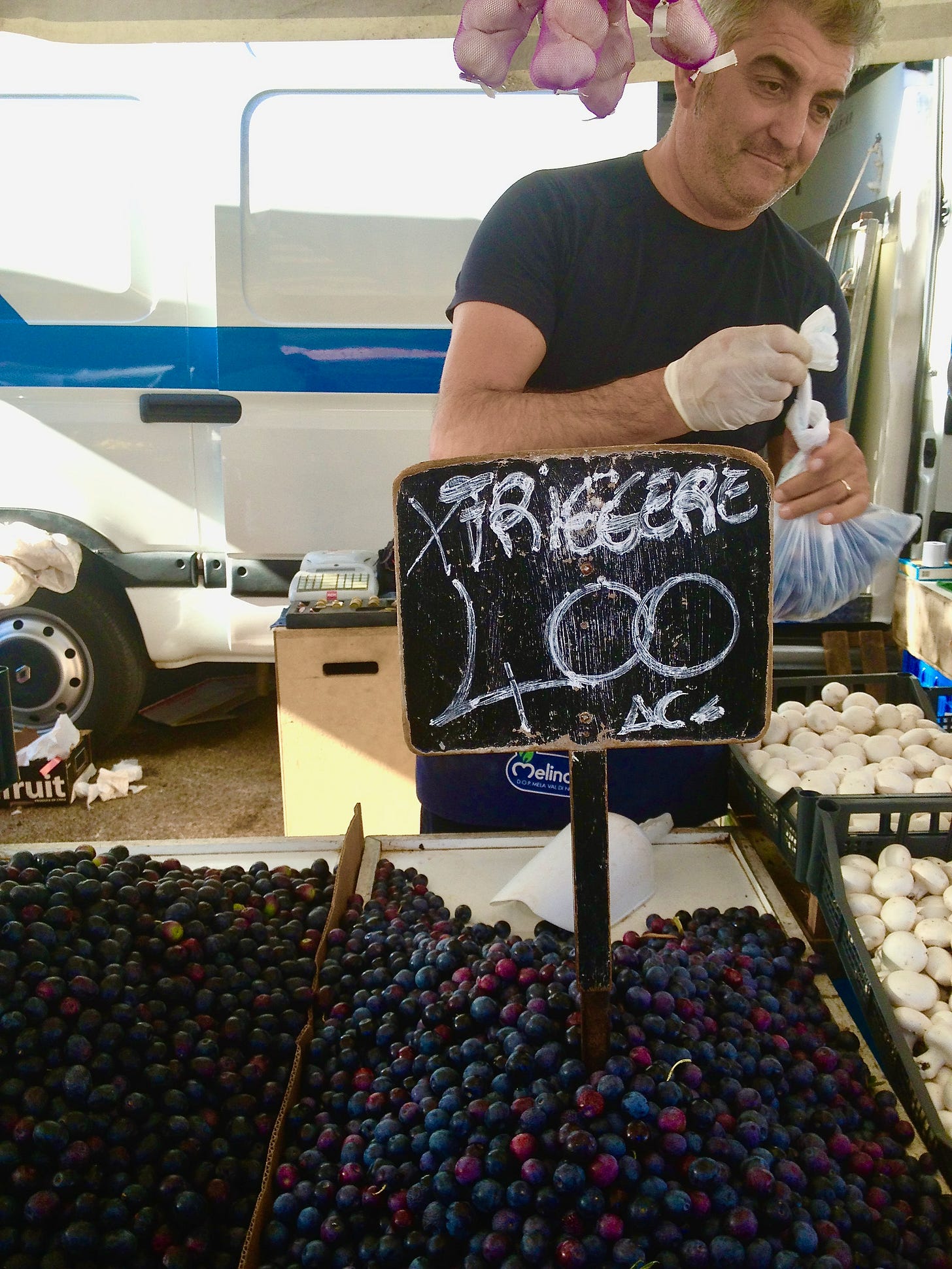Notes from All Over, China to the Med & back again
Red wine, fresh squid, fried olives, and a worthy prize
Red wine in the Mediterranean Diet?
“Should we remove red wine from the Mediterranean diet?” asks Miguel Martínez-González, a leading researcher at the Harvard T.H. Chan School of Public Health. His answer was startling, at least to me: “Yes, definitely for those under 35 years.”
This is almost incomprehensible, especially after so many years of research, much of it carried out by Dr. Martínez-González’s own team at PREDIMED, a Spanish dietary intervention trial that included almost 7,500 subjects who were at high risk for cardiovascular disease but otherwise healthy. PREDIMED (the name stands for Prevención con Dieta Mediterránea) was planned to run for six years but was stopped early because the results were so conclusive. What they showed: a Mediterranean diet including alcohol reduces cardiovascular disease by 30% compared to a low-fat diet that did not specifically include alcohol. Another PREDIMED study found that people who followed a “moderate Mediterranean drinking plan”—choosing red wine, drinking with meals, and spreading consumption over the course of the week—had a lower risk of mortality than people who abstained from alcohol.
But in a recent talk at the School of Public Health, Dr. Martínez-González called attention to the fact that alcohol’s potential harm is actually greater for people under 35 than for older people; among 20- to 34-year-olds in the U.S., one in four deaths can be attributed to alcohol (including alcohol-related accidents). Hence his conclusion: no alcohol, including red wine, for those under 35 but it’s okay, even recommended, for those older.
How can this be? My question, getting to the heart of this: Should we continue to trust medical research when it comes up with such odd and diametrically opposed conclusions?
For me, I’ll stick with wine—and make mine red, please!
More Fish Stories
The case against consuming wild fish, which I discussed here, continues to grow, especially with this sensational piece from a recent New Yorker by Ian Urbina, “The Crimes Behind the Seafood You Eat,” which took an amazing four years to research and compile. It’s long, it’s shocking, it’s well worth reading.
Urbina, founder of the Outlaw Ocean Project, goes well beyond China’s crimes against the environment to look at the human cost of China’s rapacious fishing methods which have a direct impact on the food that you eat. Especially if that food consists of breaded, fried squid rings.
It is a truth often acknowledged that Americans will eat just about anything, including rubber bands, as long as they’re battered, fried, and served up with a five-alarm sriracha sauce.
I’m not joking. The U.S. market for these bar-food, fast-food, take-out food cheapo-food favorites has exploded since they were first “invented” in the early 1980’s. In 2022, according to Urbina, Americans imported or caught 85,000 metric tons of squid. He credits this amazing growth in popularity to two significant factors: 1) changing the name from “squid” to “calamari,” giving the erstwhile trash fish a gloss of Italian glamour; and 2) changing the preparation, slicing, freezing, breading, and deep-frying squid to create an instant appetizer for every bar, every restaurant, every fast-food chain in the country. It is a truth often acknowledged that Americans will eat just about anything, including rubber bands, as long as it’s battered, fried, and served up with a five-alarm sriracha sauce.
And most of that, Urbina discovered in his four-year research project, comes from China, whose distant-water fishing fleet now numbers as many as 6,500 ships (the US has fewer than 300), catching more than five billion pounds of seafood annually—a huge proportion of which is squid. It’s a disheartening situation. Or, as my friend and colleague Paul Greenberg put it when he interviewed Urbina for his Medium platform (find it here), “reading your piece and seeing how stealthily so much of the seafood we eat is moved around to hide its real identity I felt a real despair. Is there any way to truly know that we haven’t implicated ourselves in terrible crimes when we eat from the sea?”
That’s been my question all along. Last night for dinner I roasted a nice piece of organically farmed Atlantic salmon (from the Faroe Islands—carbon emission alert!) and tonight I have on hand a handsome piece of swordfish, harvested in Canadian, presumably by Canadian fishing boats. But I can’t tell that for certain, nor can my fish monger. And that’s a big part of the problem. Fish moves fast (it has to, if it’s not frozen) and tracing its itinerary is almost impossible, unless we know it comes from local fishers in local waters.

But at least we can stay away from breaded, deep-fried squid rings. And in fact, I’d happily take wild swordfish or farmed salmon over those rubber bands anytime, anywhere.
Fried Olives: Seasonal, Local, Fresh as Can Be
“X FRIGGERE” says the sign over a bin of freshly picked olives in a market stall in the Pugliese town of Martina Franca: “For frying.”
Olives for frying? Fresh from the tree?
The following is for paid subscribers only.
Keep reading with a 7-day free trial
Subscribe to On the Kitchen Porch to keep reading this post and get 7 days of free access to the full post archives.



